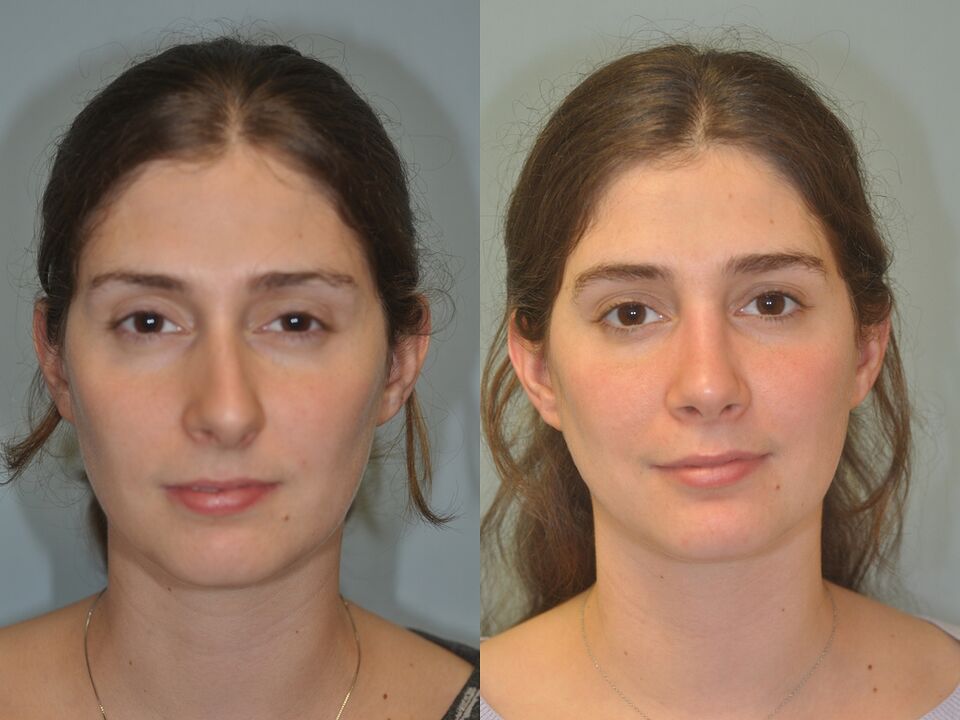
Nasal correction (formed from two other Greek words with the importance of "nose" + "plastic", it is literally translated as "plastic nose") part of the plastic surgery, which deals with the correction of congenital nasal deformation in the stage of the embryogenesis).Simply put, this is a plastic surgery to correct external and inner nasal errors.Distinguish between open, closed and non -surgical nose correction.In most cases, aesthetic and functional defects are surgically eliminated.
Initially, the correction was carried out only in connection with injuries, serious illnesses and noticeable congenital defects.Later, plastic surgery, mostly according to aesthetic signs, began to change the appearance of the nose.For example, remove the hump, reduce the tip, increase the back of the nose, reduce the nostrils and so on. A little story. For the first time, the surgeons of ancient nose correction carried out. It was mentioned in the old manuscript of "Ayurveda" from OK.1000 BC This document records the majority of the facts about antique medicine.The restoration of units of the face was required by the wars and the people who were mutilated during the execution of the court judgment in the fight.At that time, the transplant started its history.The skin of the cheeks or skin in the forehead was taken as correction material.Indian technology developed over time, so that in the Middle Ages even European doctors who mastered them were successfully operated in patients.
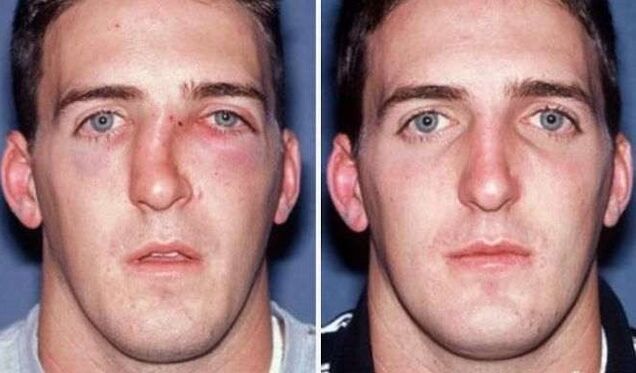
Indications for nose correction
Rinoplasty is based on medical and aesthetic indications.In other words, one people just don't like what the nose looks like.It can be with hump or curve, too big or small, wide or narrow, thrust not or long, with large or asymmetrical nostrils.And it happens that the nose of a person was twisted from birth or due to a blow (although it often cannot breathe and surgery is required to restore nasal breathing).There are frequent cases in which the company is necessary to correct appearance errors after the first unsuccessful plasticity (this is considered the most difficult surgical intervention).The operation is only approved by people over the age of 18 (if there are no urgent medical signs).This is due to the fact that bone tissue is formed up to the age of eighteen and the cartilage is even up to twenty.Therefore, the most suitable age for nasal correction from 20 to 35 years.The following is a description of the most common problems with which men and women turn to Nashono surgeons.
Nose with a hump
The essence of the problem: there is a small hump on the nose, which looks more massive and the face is grumpy and dissatisfied.Reason: The defect can be innate, occur after an injury or the result of a previously unsuccessful correction.The distance method: In most cases, the hump is removed in plastic surgery using a closed or open method under general anesthesia.If the bridge of the nose is too wide, it is necessary to carry out a nose correction with osteotomy (rapprochement of the back bones).
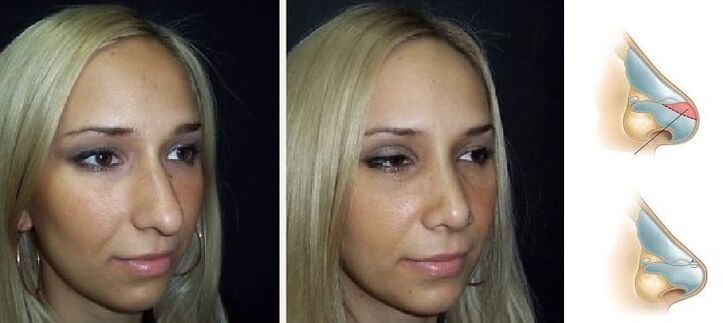
A wide nose
The essence of the problem: one person has a very wide nose, which makes the face massive and rude.Reasons: A defect can occur after an injury, be innate or the result of unsuccessful removal of a hump.Detachment method: Open correction with osteotomy under general anesthesia.The essence of this technique is that part of the bone is removed in the back and then the side parts are brought together.
Nosy's nose crumbs
The essence of the problem: the bridge of the nose is asymmetrical.Due to the curvature, a person can often not breathe at all.This problem refers to functional indications for surgical correction.How a defect appears: in most cases this is the result of a fracture.Although it happens that the nose partition is curved during growing up due to the intensive growth of the skull bones.Is it possible to straighten your nose? In most cases, an operation to compensate for partition (Septoplasty) under local anesthesia is enforced.The essence of the operation is shown in the following diagram.If this is not sufficient, you use rinoseptoplastic in such cases (if the partition correction is combined with the elimination of other nose shape errors).In cases in which the injury is quite serious, they use reconstructive plastic (more serious surgical interventions, which are often carried out in several stages).This section of plastic surgery examines methods for restoring the nose for serious injuries and in cases of its complete absence.The task of the surgeon in this case is to restore the integrity of the bone cherry base and skin.
The saddle shape of the nose
The essence of the problem: the nose is too low.Because of this, the shape of the nose is similar to a saddle in profile.Reason: The defect can be innate, can occur as a result of an injury if part of the bone or cartilage has been damaged.How can you change the situation? The correct shape is restored by transplantation of a Costal cartilage, the cartilage from the ear cup (on the outside of the ear) or by implanting a synthetic implant.
Big nose
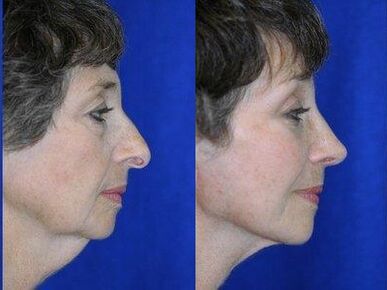
The essence of the problem. Too big (long or width) nose makes the face disproportionate.Most of the time, the top is very thickened in such cases.Reason: The defect is most common. How do you solve the problem? The type of surgical intervention depends on the cause (in some cases it is necessary to reduce the tip of the tip, in other cases the nostrils are reduced, but it happens that it is necessary to remove the hump).Before deciding that it is possible to often use plastic surgeons to 3D computer modeling.In this way you can see before the operation what the face looks like according to the process.
The problem form of the tip of the nose
The essence of the problem: The right facial shares are violated due to the wrong shape of the tip of the nose.For example, it can be:
- Closely
- Broad
- Round (nose with potatoes or tubers)
- Lowered (crochet)
- Raised (Kuring)
- Forked
How do you solve the problem? The course of the operation is thought through depending on the type of problem.
- In order to reduce the wide tip, it is sufficient to bind the dome of the large cartilage, and in other cases it is also necessary to cut part of the cartilage tissue.
- A round meaty tip has to remove part of the cartilage more often, followed by an approximation of the domes, and often also reduces wings during operation.
- The steamed nose tip must install a transplant from the patient's own cartilage tissue in the ear or rib area or made of synthetic material.
- The tip can look too tight due to diseases that are associated with the loss of the rigidity of the side legs of the cartilage.They are reinforced and also with transplants.
- During the correction of the lowered nose tip, the surgeon removes part of the cartilage and increases it by sewing, which repairs it in a new position.
- Another operation of the operation implies the strengthening of Columella of the nose to ensure good support for the top.
- There is a third method associated with the reduction of part of the inner muscle, according to which the tip is pulled upwards
- Cournality is also eliminated in different ways that include the installation of your own or synthetic transplants in the tip of the tip or the nose bridge.
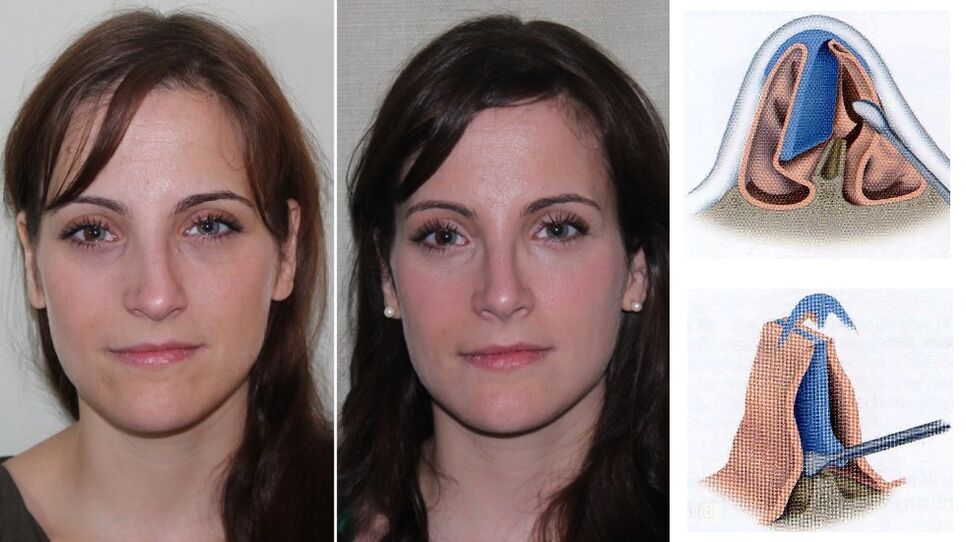
Large or different nostrils
The essence of the problem: the disproportionate size of the nostrils (too small or too large) or a significant asymmetry can disturb the harmony and the appearance of the face deteriorates.How can you remove the defect? The course of the operation depends on the source of the problem.You can sew the wings of the nose, it may be necessary to strengthen the coupling of retirement cartilage, and in some cases it is sufficient to align the nasal septum.It happens that it is necessary to increase or reduce the long nose tip
Contraindications to nose correction
To absolute contraindications in which nashal tube should never be made:
- Diabetes I, Type II
- Coronary heart diseases and other diseases serious cardiovascular diseases in which general anesthesia is contraindicated
- Meningitis, tuberculosis, gonorrhea, brucellosis and other serious viral infectious diseases
- System diseases: Red Lupus, HIV, leprosy and others.
- An allergic reaction to anesthesia components.
- Chronic diseases: liver cirrhosis, hepatitis, etc.
- Cancer
- Bronchial -asthma
- Problems with blood clotting
- Mental illness
The relative contraindications (nasal corrections can take place if the disease is healed):
- Age up to 18 years (correction is only acceptable in the most extreme cases)
- Inflammatory diseases (sore throat, frontal, sinusitis, otitis media)
- Ars, Sars
- Skin diseases
- Age after 50 years (an operation is carried out if there are no chronic diseases in connection with absolute contraindications)
- Pregnancy, lactation, menstruation
How the nose correction passes
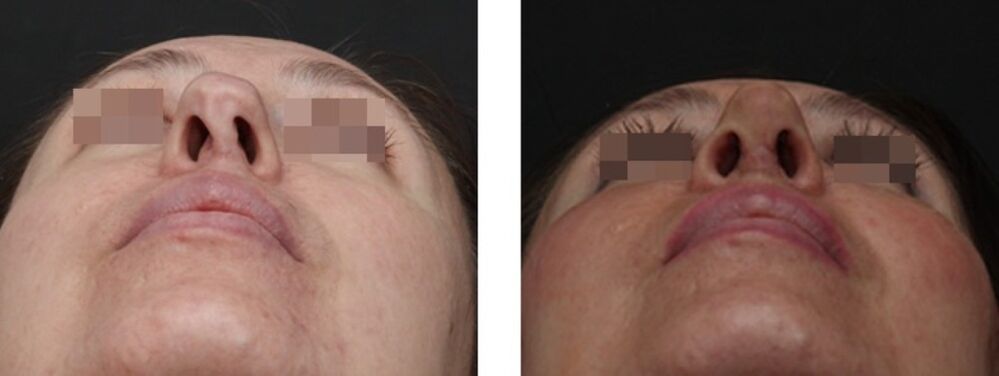
Rinoplastics are only carried out under general anesthesia.The duration of the procedure depends on the complexity of the surgical intervention and varies between 30 minutes and 2 hours.During the first consultation, the doctor offers 3D modeling to achieve a complete understanding of the patient.This helps to show a person which end result can be expected.If he imagines that it turns out, it is easier for him to make a conscious decision.Before the operation, the patient must exist a general and biochemical blood test and a general urine test.It is also necessary to carry out a blood test for HIV and an analysis for blood tests for proshrombin.It is necessary to create an electrocardiogram and, if necessary, carry out an inspection with profile doctors.The preparation of the patient in the preoperative period includes the following recommendations:
Two weeks before the company:
- Refuse to drink alcohol (especially carbonated)
- Do not take any blood -thinning medication
- Not sunbath
- smoking prohibited
A week before the procedure:
- Acquire all the necessary medication
- Minimize the use of cosmetics
- Buy contact lenses to replace glasses (for people with a bad view)
10 hours before the operation:
- Do not drink anything (or drink the minimum amount of liquid)
- Do not use perfume and cosmetics
- Prepare clothes that do not have to be removed over your head
- Remove jewelry
Rehabilitation after nose correction
A complete restoration of tissues after a nose correction occurs one year after the operation.In order to accelerate the healing process of tissues and to avoid the occurrence of unwanted consequences, it is extremely important to strictly observe the doctor's recommendations regarding behavior in the postoperative period.In the first days after the operation, the patient is uncomfortable because he has to wear plaster and endure tampons in the nose.This means that you can only breathe with your nose, your mouth often dries out.The temperature can be increased.I want to drink.It is difficult to wash and brush your teeth.Remove plaster and remove tourundas from the nose earlier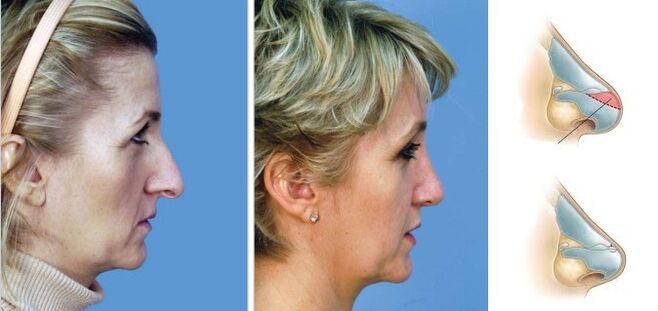 It is impossible.This can lead to undesirable deformations, an increase in swelling and problems with the tissue healing.
It is impossible.This can lead to undesirable deformations, an increase in swelling and problems with the tissue healing.
The first four five days of edema will worsen and then it begins to let go.To hold back the swelling, it is recommended to carry out the first day of cold compresses.After removing the plaster dressing for about two weeks, people will continue to be caused by the edema of the nose.Perhaps a loss of sensitivity in the area of surgical interventions.Bruises are still visible.At this point, breathing with your nose is easier. During rehabilitation in the first week, surgeons recommend that nose corrections follow the following restrictions:
- You cannot do too salty, spicy, sour and other simple food.
- You cannot tend your head down, take a bathroom, lift weights (including a child or pets that carry out harder than 5 kg.) And load.
- You just have to sleep on your back, on a high pillow.
One person can go to work two weeks after the operation, although it will be necessary to avoid severe physical work.Therefore, it is best to plan a vacation for this time in order to offer complete peace and calm for a quick recovery.
Within two months of nasal correction:
- It is necessary to rinse the nasal cavity regularly
- You cannot be exposed to serious physical exertion, do sports or go to the pool
- You can't drink alcohol
- You can't smoke
- Use or eliminate coffee
- It is forbidden to visit a bath house or a sauna
- It is necessary to avoid direct sunlight on the face
- You cannot wear glasses.They influence the shape of the nose bridges so that you have to wait until the bone heals completely.
Possible complications after nose correction
It is considered a normal condition if bruises are around the eyes and swelling immediately after the operation.They are a direct result of damage during the operation of small vessels.After almost two weeks, primary edema and bruises should already decrease.
The early complications include the following problems:
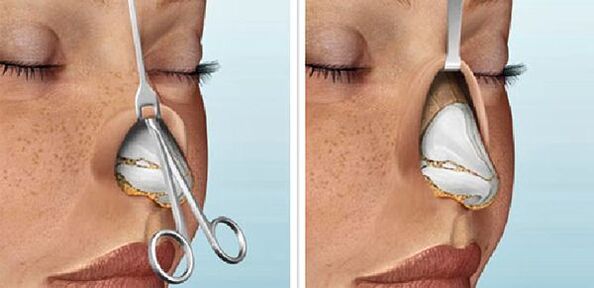
- Bleeding
- Hematoma
- Very strong edema
- Necrosis
- Wound infection
- Discovery of seams
- Deafness of the tip of the nose
If these problems arise, it is necessary to contact your participating surgeons in good time and to start treatment over time and prevent your further development.
Late complications include:
- Maybe the look of bone grain
- The formation of keloid garben
- Opinion about the tip of the nose
- The bifurcation of the tip of the nose
- The saddle shape of the nose
- The curvature of the nose back
- asymmetry
- The appearance of a hump in the nose
- Perforation of the partition
- Difficult breathing
Most of the complications listed above can be removed with a repeated operation.Some of them appear due to the mistakes of the surgeon, some due to the guilt of the inappropriate behavior of the patient during the recreation phase, and the occurrence of some is explained by the different characteristics of the human body.






















